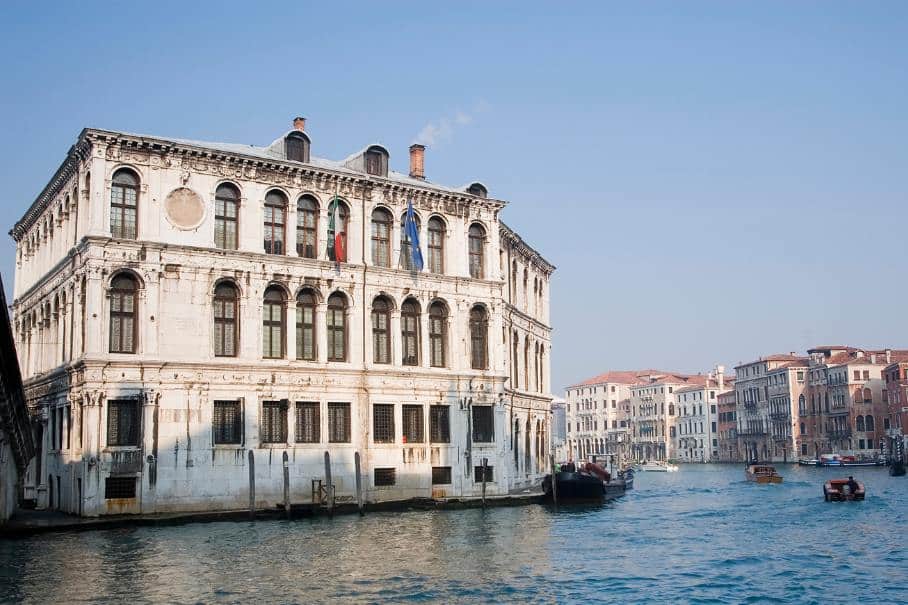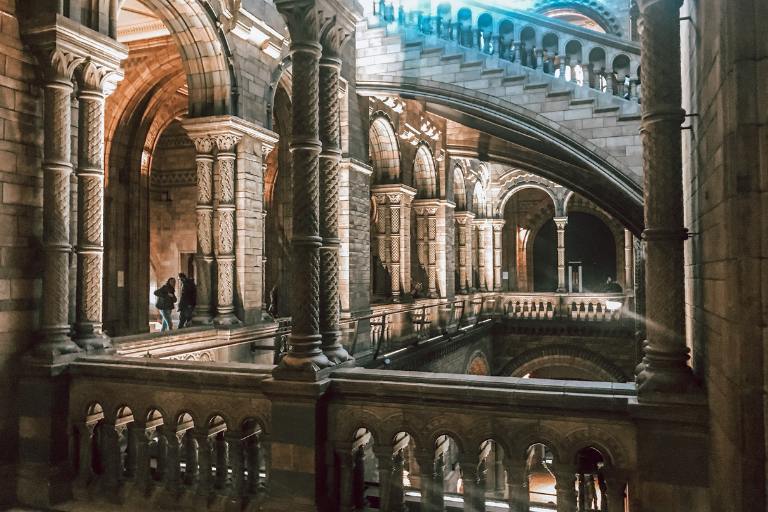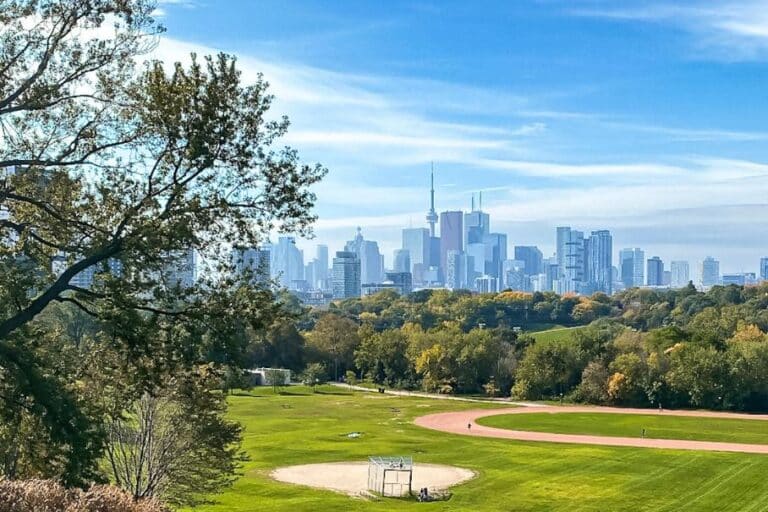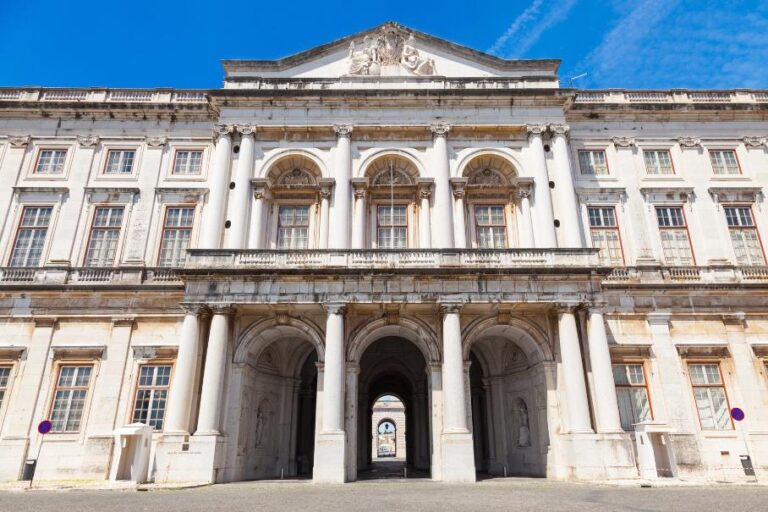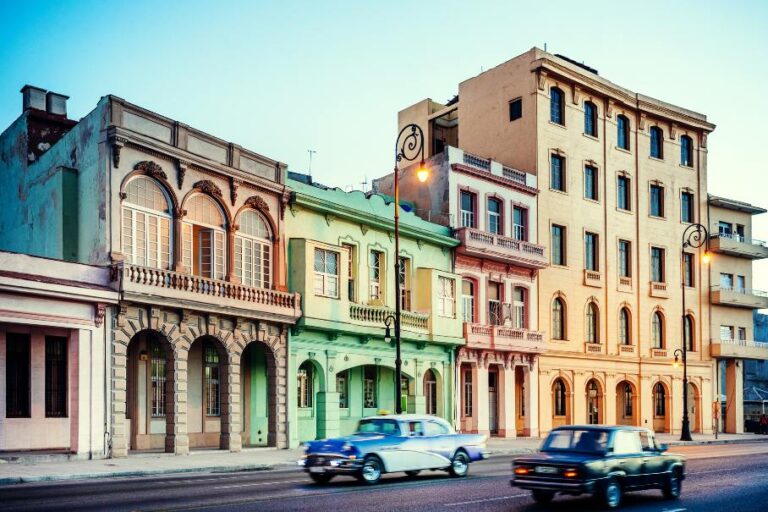15 Best Museums in Venice Italy You Can’t Miss
Venice is one of the most beautiful cities in Italy with loads of history and art. While most people spend their time here wandering around the canals, they don’t realize that there are many outstanding museums in Venice to explore. If you love museums, especially in places that haven’t changed much over the centuries, you’ll love the selection here.
The museums in Venice are a great alternative to the busy tourist spots in the city. They are also a great option if you’re visiting during the off-season or on a rainy day. Here, you can dive into Venice’s artistic and historical legacy while seeing a different side of the city.
Best museums in Venice to explore
Whether you’re here for a day or a few, here are some of the best museums in Venice to check out during your visit.
Palazzo Ducale (Doge’s Palace)
Standing proudly in Piazza San Marco, the Doge’s Palace is a masterpiece of Venetian Gothic architecture. Once the seat of power for the Venetian Republic, this palace-turned-museum offers visitors a window into the opulent world of Venetian doges. As you wander through its grand halls and secret passages, you’ll be surrounded by stunning frescoes, intricate gold leaf decorations, and imposing paintings by Venetian masters.
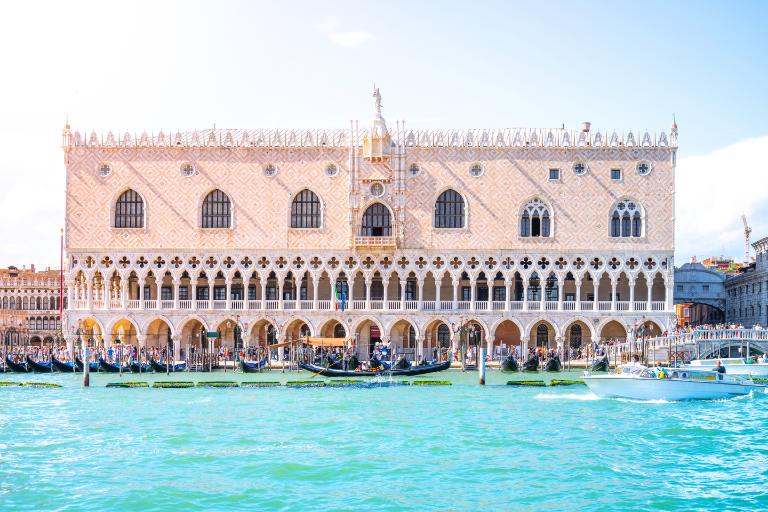
Don’t miss the grand Sala del Maggior Consiglio, where the city’s nobility once gathered, or the infamous Bridge of Sighs that connects the palace to its ancient prisons. The Palazzo Ducale is a great place to explore if you want to learn more about those who ruled Venice.
Museo Correr (Royal Palace of Venice)
The Correr Museum is just across St. Mark’s Square from the Doge’s Palace. It offers a comprehensive look at Venetian art and history. Housed in the Procuratie Nuove, the museum’s collections span from the city’s earliest days to the 19th century. Here, you’ll find everything from ancient maps and naval instruments to Neo-classical sculptures and paintings.
PRO TIP: Get the Venice City Pass for free or discounted entry to top churches and museums in Venice
The museum offers a look at Venice’s development over the centuries, with exhibits dedicated to the different stages of the city’s story. Pay special attention to the coin collection and the globes – they’re a testament to Venice’s far-reaching maritime empire.
Gallerie dell’Accademia
If you love art, you’ll love the Gallerie dell’Accademia. Situated in the Dorsoduro district, this museum houses the world’s most comprehensive collection of Venetian paintings from the 14th to the 18th centuries. The gallery is spread across three historic buildings, including the former Scuola Grande della Carità.
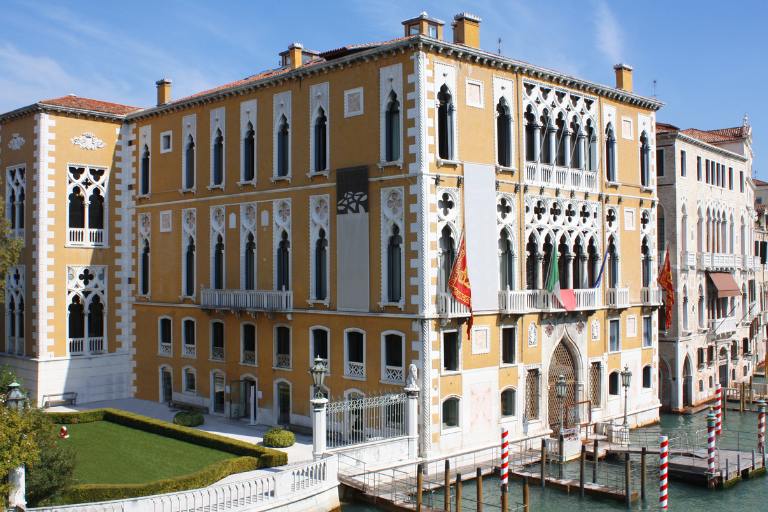
Here, you can admire masterpieces by Venetian giants like Titian, Tintoretto and Canaletto, as well as altarpieces by Giovanni Bellini. The Accademia offers a crash course in the evolution of Venetian art, from Byzantine-influenced Gothic to the height of the Renaissance and beyond.
Peggy Guggenheim Collection
One of the most popular museums in Venice is the Peggy Guggenheim Collection on the Grand Canal. Housed in the unfinished 18th-century Palazzo Venier dei Leoni, this museum is the place for lovers of 20th-century art. Peggy Guggenheim, an American heiress and passionate art collector, amassed this impressive collection over her lifetime.
Here, you’ll find works by modern masters like Jackson Pollock, Pablo Picasso and Salvador Dalí. The museum also has a sculpture garden that features pieces by Henry Moore and Alexander Calder. The juxtaposition of cutting-edge modern art against a historic Venetian palazzo backdrop creates a unique and unforgettable experience.
Pinault Collection at Punta della Dogana and Palazzo Grassi
These two museums, both part of the Pinault Collection, represent the cutting-edge contemporary art in Venice. Punta della Dogana, a former customs house at the tip of Dorsoduro, has been transformed into a sleek exhibition space by Japanese architect Tadao Ando. Palazzo Grassi, a grand 18th-century palace on the Grand Canal, offers a more traditional setting for rotating contemporary art exhibitions.
Both venues host temporary exhibitions featuring works by international contemporary artists, offering a fresh and often challenging perspective on modern art. The contrast between the historic architecture and the avant-garde artworks is a unique blend of old and new Venice.
Ca’ Pesaro – International Gallery of Modern Art
Housed in a stunning Baroque palace designed by Baldassare Longhena, Ca’ Pesaro is home to Venice’s International Gallery of Modern Art. The museum’s collection focuses on 19th and 20th-century art, with a particular emphasis on Italian artists. Here, you’ll find works by Gustav Klimt, Auguste Rodin and Giorgio de Chirico, to name a few. The palace itself is a work of art, with its imposing facade and ornate interiors providing a fitting backdrop for the modernist works on display.
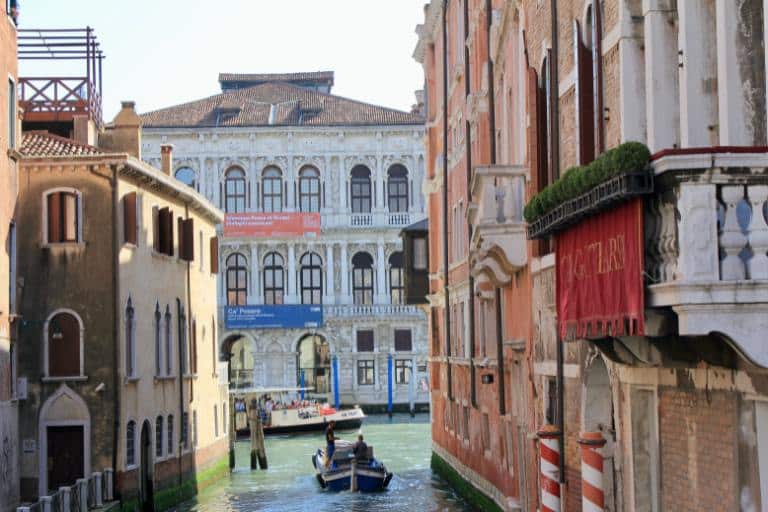
Fortuny Museum
Hidden away in Campo San Beneto, the Fortuny Museum is a tribute to the eclectic genius of Mariano Fortuny. Housed in the Gothic Palazzo Pesaro degli Orfei, where Fortuny lived and worked, the museum is dedicated to his diverse talents as a fashion designer, photographer, painter, and theatrical innovator. The palazzo’s rooms are filled with Fortuny’s distinctive textiles, dresses, and lamps, as well as his paintings and photographs. The museum also offers a unique insight into the creative mind of one of Venice’s most intriguing adopted sons.
Natural History Museum
For a change of pace from art museums in Venice, visit the Natural History Museum in the Fondaco dei Turchi, a 13th-century palazzo on the Grand Canal. The museum offers a journey through time, from the origins of life to the present day. Highlights include fossilized skeletons of prehistoric creatures, an extensive collection of insects and mollusks, and interactive exhibits on Venice’s unique lagoon ecosystem. It’s a great option for families and anyone interested in the natural world.
Given Venice’s maritime history, a visit to the Naval Historical Museum is a must. Located near the Arsenale, the former shipyard of the Venetian Republic, this museum charts the evolution of Venetian naval power from the 14th to the 20th centuries. The collection includes model ships, navigational instruments, and even full-sized historic vessels. Don’t miss the Bucintoro, a detailed model of the Doge’s golden barge used in the annual “Wedding of the Sea” ceremony.
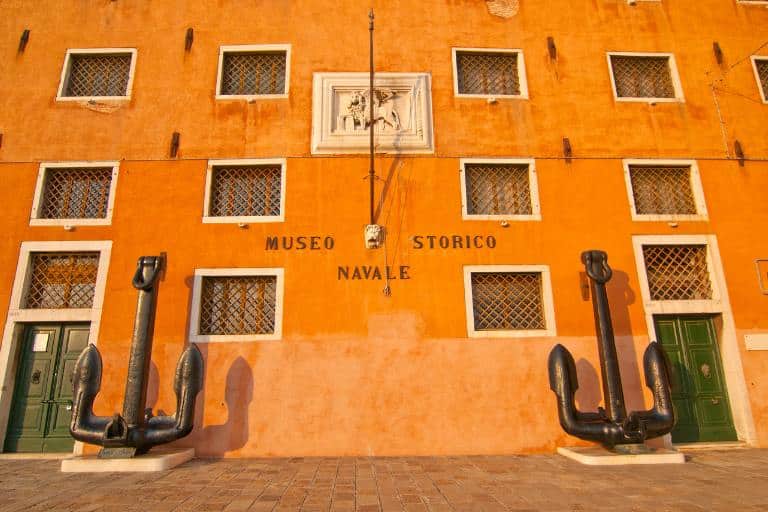
Scuola Grande di San Rocco
Often referred to as “Tintoretto’s Sistine Chapel,” the Scuola Grande di San Rocco is a unique artistic experience. This 16th-century confraternity building houses an unparalleled collection of works by Jacopo Tintoretto, one of Venice’s most celebrated Renaissance painters. The building’s interior is covered in Tintoretto’s dramatic canvases, creating an immersive experience that transports visitors to the height of Venetian artistic achievement. The play of light and shadow in Tintoretto’s work is particularly striking in this setting.
Murano Glass Museum
Take a short vaporetto ride from central Venice to the island of Murano. The island is famous for its glassmaking tradition and is a must-visit for anyone interested in the art. The Murano Glass Museum is one of the most unique museums in Venice, and you can learn about glassmaking there. The fact that it’s housed in the Palazzo Giustinian just adds to the appeal. The museum’s collection includes exquisite examples of Murano glass from different periods, showcasing the evolution of techniques and styles. Here, you’ll find everything from delicate beads to grand chandeliers and everything in between.
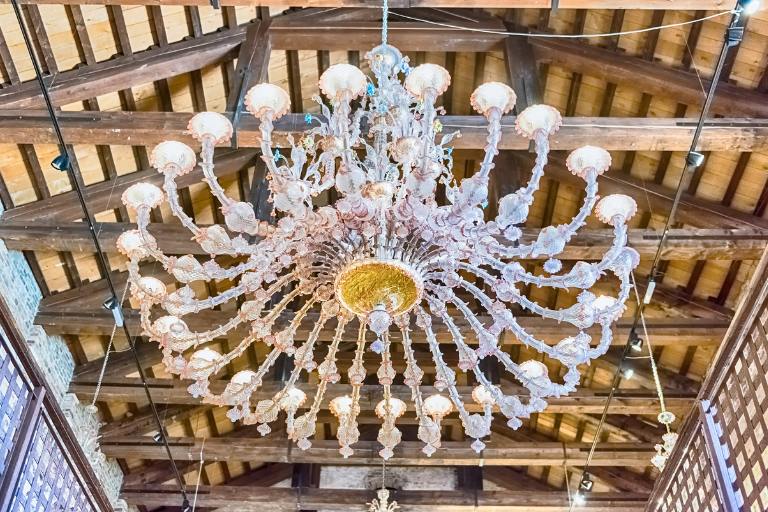
Lace Museum on Burano (Museo del Merletto)
Burano, home to the Lace Museum, is another island worth visiting for its unique museum. Situated in the historic Palazzo Grassi (not to be confused with the one on the Grand Canal), this museum celebrates the intricate art of Burano lace-making.
The collection includes fine examples of lace from the 16th to the 20th centuries, as well as displays of the techniques used to create these delicate works of art. You might even see local women demonstrating traditional lace-making methods.
Ca’ Rezzonico
Perched on the Grand Canal, Ca’ Rezzonico is a stunning example of 18th-century Venetian Baroque architecture. This palace-turned-museum offers a glimpse into the opulent lifestyle of Venice’s nobility during the city’s final century as an independent republic. It was also famously where James Bond visited during one of his trips.
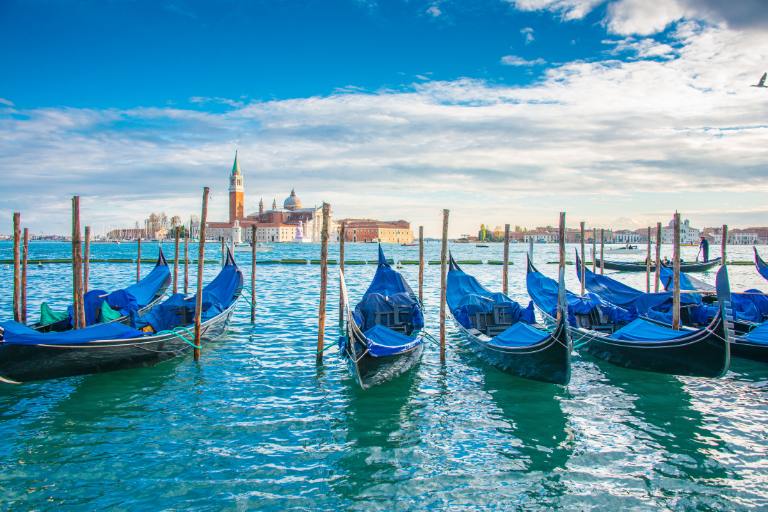
As you explore the lavishly decorated rooms across three floors, you’ll encounter frescoes by Giambattista Tiepolo and furniture from the period. The museum’s permanent collection includes works by Pietro Longhi and Francesco Guardi, providing insight into daily life in 18th-century Venice. Don’t miss the breathtaking ballroom on the piano nobile, with its trompe l’oeil frescoes and Murano glass chandeliers. The upper floors house an excellent collection of paintings by artists like Canaletto and Giorgio Morandi.
Da Vinci Interactive Museum
The Da Vinci Interactive Museum is one of my favourite museums in Venice. It is located near Piazza San Marco and offers a unique look and hands-on exhibits of Leonardo da Vinci’s inventions. Here, you can check out over 60 wooden models of his inventions, faithfully recreated from da Vinci’s original drawings.
You can touch, test and manipulate the models, experiencing firsthand how these ingenious creations work. From flying machines to hydraulic systems, the exhibits bring da Vinci’s visionary ideas to life in a way that’s engaging and educational. In addition, you can check out reproductions of some of da Vinci’s most famous sketches and anatomical studies. Get your tickets today.
Ca’ d’Oro
If you’re unsure what museums in Venice to visit, make sure to add the Ca’ d’Oro, or “Golden House,” to your itinerary. Perched on the Grand Canal, this stunning Gothic palace will take you back to Venice’s opulent past. Today, it houses the Galleria Giorgio Franchetti, a remarkable museum featuring Renaissance paintings, sculptures, tapestries and ancient bronzes. It’s a great place to admire works by artists such as Titian, Tintoretto and Mantegna, making it a treasure trove for art enthusiasts.
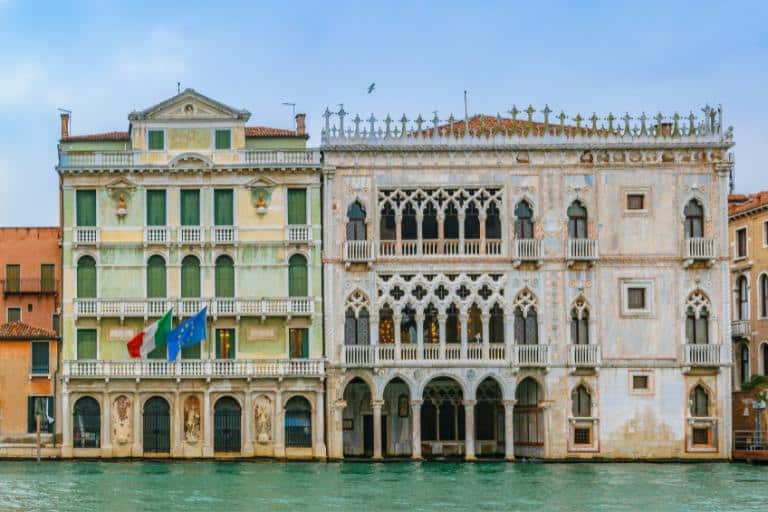
Beyond its art collection, the Ca’ d’Oro is a feast for architecture lovers. The palace’s elegant courtyard and breathtaking views of the Grand Canal are as captivating as the works inside. This museum offers a tranquil escape from Venice’s bustling streets, making it a perfect addition to any cultural itinerary. Be sure to linger on the balcony for stunning vistas of the canal and the city’s iconic waterways.
Many museums in Venice are part of the Fondazione Musei Civici di Venezia network, which offers combination tickets for multiple sites. This can be a cost-effective way to explore Venice’s diverse museum landscape, allowing you to delve deeper into the layers of history and art that make this floating city so captivating.
To make the most of your visit, consider getting a Venice Museum Pass. This handy ticket offers access to several museums and can save you both time and money. Either way, I think you’ll love visiting museums in Venice and learning more about the city’s fascinating past.

